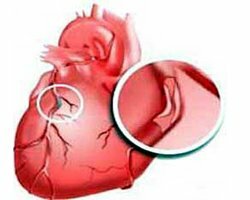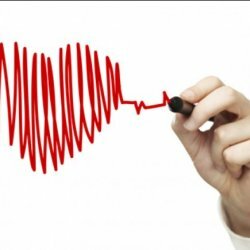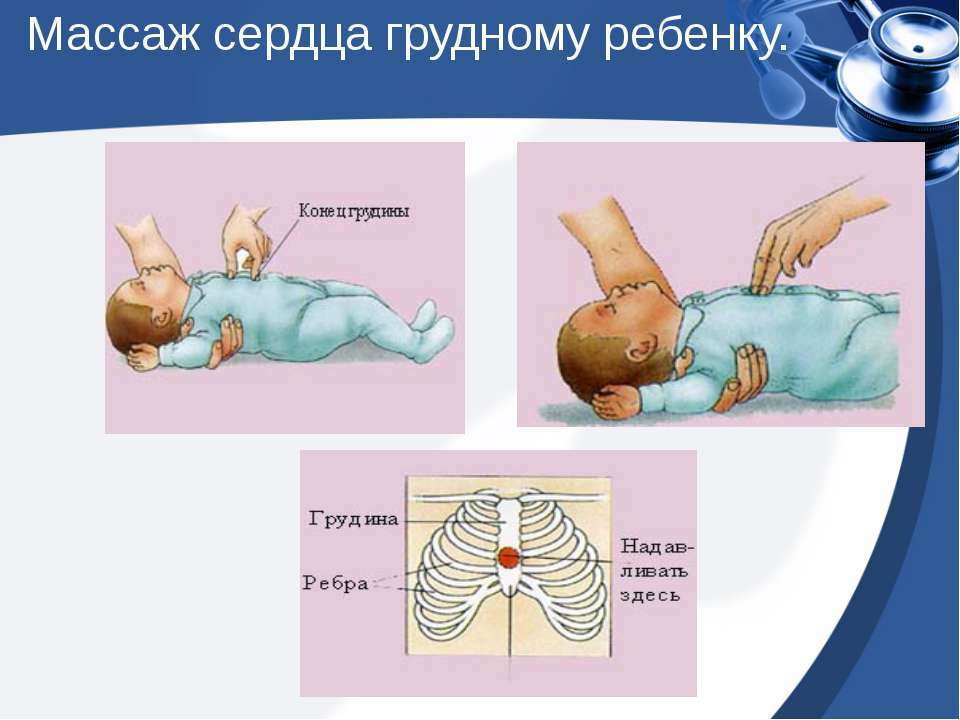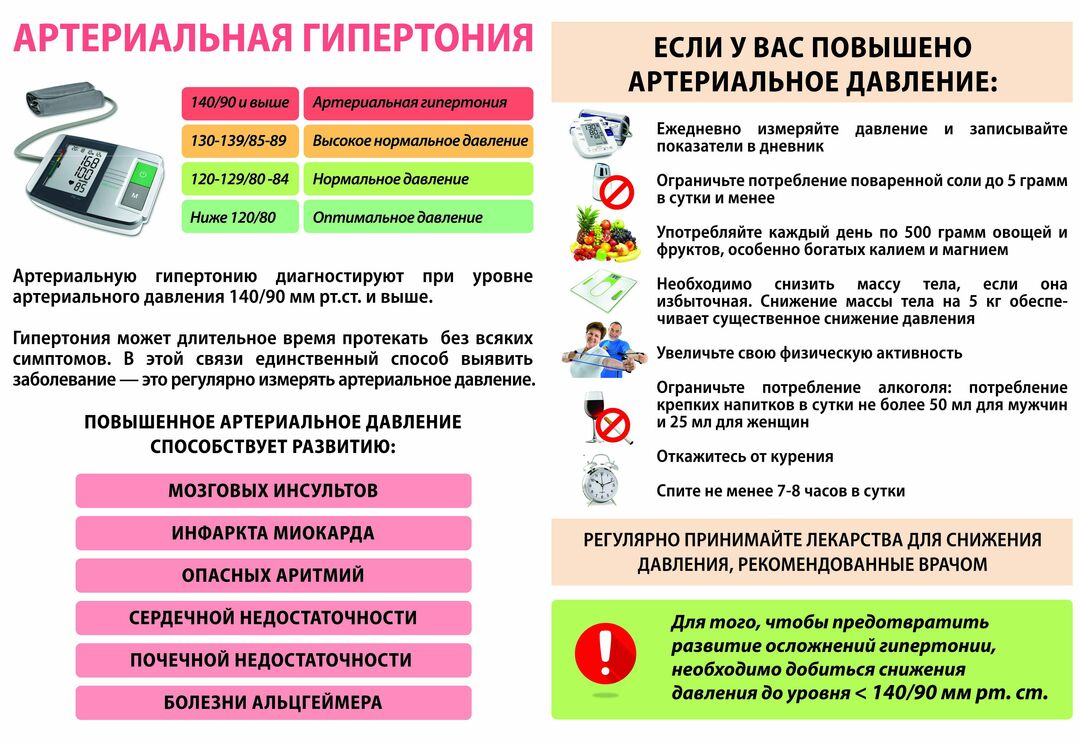Cardiac ischemia
 The heart of a person is a muscular organ that, by its rhythmic re-contraction, ensures the continuous movement of blood through the blood vessels. For the saturation of the blood of the heart muscle meets the network of coronary vessels coming from two arteries. For the normal functioning of the heart, a balance is needed between the necessary influx of blood to the heart muscle and the ability of the coronary vessels to provide this volume. Any violation of this balance leads to ischemia, subsequently a number of heart diseases that are included in the concept of IHD can develop.
The heart of a person is a muscular organ that, by its rhythmic re-contraction, ensures the continuous movement of blood through the blood vessels. For the saturation of the blood of the heart muscle meets the network of coronary vessels coming from two arteries. For the normal functioning of the heart, a balance is needed between the necessary influx of blood to the heart muscle and the ability of the coronary vessels to provide this volume. Any violation of this balance leads to ischemia, subsequently a number of heart diseases that are included in the concept of IHD can develop.
What is ischemic heart disease
Ischemic heart disease( CHD) is an organic or functional myocardial lesion caused by the absolute or relative lack of blood supply to the heart muscle( ischemia). Ischemic heart disease is one of the most common diseases in the developed world, leading to sudden death or disability. It is most often diagnosed in men of mature age.
Ischemic heart disease is one of the most common diseases in the developed world, leading to sudden death or disability. It is most often diagnosed in men of mature age.
Causes of development of coronary heart disease
The main cause of circulatory disorders of the coronary arteries is atherosclerosis of the vessels, which can cause both a slight narrowing of the lumen by an atherosclerotic plaque and a complete vascular obstruction( occlusion).Thromboembolism, spasm of the coronary arteries, cardiospasm - are the causes of aggravation of atherosclerosis.
The main reasons for the development of IHD include:
-
 Dyslipidemia - changes in the number and ratio of blood lipids( fats and fat-like substances) and lipoproteins( protein-lipid complexes) significantly increasing the risk of atherosclerosis and coronary artery disease.
Dyslipidemia - changes in the number and ratio of blood lipids( fats and fat-like substances) and lipoproteins( protein-lipid complexes) significantly increasing the risk of atherosclerosis and coronary artery disease. - Insufficient physical activity and obesity.
- Diabetes mellitus.
- Arterial hypertension.
The cause of CHD development can also become bad habits, in particular smoking, alcohol and fatty foods have a detrimental effect on the heart muscle, and in combination with any of the above diseases at times increase the risk of developing coronary artery disease. Elderly age is also at risk, since the vessels with age lose their elasticity and become more vulnerable to atherosclerosis.
Classification of ischemic heart disease
Sudden coronary death
 She is also a primary heart failure. Depending on the length of time between the onset of a heart attack and the moment of onset of death, instantaneous cardiac death and rapid cardiac death are distinguished( within 1-6 hours).
She is also a primary heart failure. Depending on the length of time between the onset of a heart attack and the moment of onset of death, instantaneous cardiac death and rapid cardiac death are distinguished( within 1-6 hours).
Accordingly subdivide:
- Sudden coronary death with successful resuscitation.
- Sudden coronary death( death).
Angina of the
Characterized by seizures of compressive or pressing pain in the retrosternal area, with pain can be felt in the left shoulder, shoulder blade or in the left arm, as well as in the neck and lower jaw. The attack goes on decline in 10-15 minutes, especially after taking the nitroglycerin pill and when physical activity stops. If the pain does not go away, you need to seek medical help as soon as possible.
Angina pectoris:
- Angina of stress , arising from physical or emotional stress. Stenocardia of stress can be the first to arise, stable( with the physical load of the same magnitude, the attack of angina manifests itself for several years) or unstable( progressive, early postoperative or postinfarction).With stable angina pectoris, one of the four functional classes of the disease, the load tolerance index, must be indicated.
- Stenocardia of rest .Attacks are not associated with physical or nervous tension, often occur during sleep.
- Vasospastic angina ( variant, Prinzmetal angina, spontaneous) is not common. The cause of it is suddenly arose spasm of the coronary vessels, while the vessels can be clean - without obvious signs of atherosclerotic lesion.
Myocardial infarction
Myocardial infarction is ischemic necrosis( death) in the cardiac muscle, can be both large-focal and small-focal.
Postinfarction cardiosclerosis
After myocardial infarction, necrosis-affected myocardial foci are restored by the growth of scar-connective tissue, which does not conduct electrical impulses and does not perform a contractile function. Increased, due to connective tissue, the mass of the heart muscle gives an additional burden to the heart.
Heart rate disorders
This is a violation of the frequency, rhythm and sequence of excitation and contraction of the heart muscle.
Heart failure
 The heart can not effectively pump the blood, as a result of which the circulation of nutrients and oxygen in the body is disrupted, which causes blood stasis.
The heart can not effectively pump the blood, as a result of which the circulation of nutrients and oxygen in the body is disrupted, which causes blood stasis.
Symptoms of ischemic heart disease and first aid
With initial heart failure
A person suddenly loses consciousness, makes wheezing and / or gurgling sounds for a short time and suddenly stops breathing completely. It is necessary immediately to call an ambulance, to try to bring a person to life with a pat on the face. If a person does not react to start a closed heart massage and stop it in case the patient begins to react( movements, facial expressions, began to make sounds) or continue the massage before the doctors arrive.
In acute heart failure
Frequent, heavy and noisy breathing, shortness of breath( sometimes as a gasp), it is difficult to inhale air. Sometimes when you breathe, you can hear damp, wheezing sounds or sounds, cough, swelling. A typical sitting posture of the patient, resting with his hands on his knees. It is necessary to call an ambulance, give the patient a sitting position( preferably a chair with armrests), provide a physical and psycho-emotional rest, ensure the influx of fresh air( ventilate the room).Under the tongue put a pill of nitroglycerin, if after the first pill the patient feels lighter - repeat the appointment every 10-15 minutes before the arrival of doctors. In some cases of heart failure, to reduce the amount of blood flow to the heart, to ease the attack, apply a hot foot bath or applying a tourniquet to the legs in the groin area to squeeze the superficial veins.
With myocardial infarction
Suddenly or paroxysmally occurring pressing, compressing, burning, bursting pains behind the breastbone with a duration of more than 5 minutes. Sometimes there is pain in the area of the left shoulder( forearm), the left scapula, the left half of the neck and the lower jaw, both shoulders, both hands, the lower part of the sternum together with the upper abdomen. Shortness of breath, severe weakness, cold sweat, nausea and lack of air. This state develops against a background of physical or psychoemotional stress, often after a certain period of time after it. As soon as you feel the characteristic signs of myocardial infarction - immediately call an ambulance team, any delay is dangerous for life.
With angina pectoris
Pressing, compressive pains, less often burning( similar to heartburn), can be a feeling of a foreign body in the chest( angina pectoris).Pain behind the sternum, which can be felt in the lower jaw and teeth, in the neck, arm, forearm and shoulder blade( mainly on the left side of the body).There is also a pallor of the skin, sweating, a sense of interruption in the heart. At an attack it is necessary to accept a quiet position( it is better sedentary), to accept nitroglycerinum and Corvalolum with the purpose of calm. Prolonged angina for 20-30 minutes is an occasion to consult a doctor, since it can serve as a harbinger of a more serious disease - myocardial infarction.
Diagnosis of coronary heart disease
 When referring to a cardiologist at the initial stage, an anamnesis is collected: the nature of the pain, their location, the duration, the conditions under which they occurred, the medications you take, your bad habits and the already existing diseases. On examination, the presence of noises in the heart, a violation of the rhythm of the heartbeat, the presence of swelling( can indicate heart failure).The registration of an electrocardiogram at rest and with a stepwise increase in physical activity( stress test) is mandatory. Also, such examinations of chest x-ray, ultrasound of the heart as usual, and with exercise, coronary angiography, holter monitoring of ECG, computed tomography of the heart and blood vessels can be prescribed. In addition, blood tests are performed to determine the level of cholesterol, lipoproteins, blood sugar, etc.
When referring to a cardiologist at the initial stage, an anamnesis is collected: the nature of the pain, their location, the duration, the conditions under which they occurred, the medications you take, your bad habits and the already existing diseases. On examination, the presence of noises in the heart, a violation of the rhythm of the heartbeat, the presence of swelling( can indicate heart failure).The registration of an electrocardiogram at rest and with a stepwise increase in physical activity( stress test) is mandatory. Also, such examinations of chest x-ray, ultrasound of the heart as usual, and with exercise, coronary angiography, holter monitoring of ECG, computed tomography of the heart and blood vessels can be prescribed. In addition, blood tests are performed to determine the level of cholesterol, lipoproteins, blood sugar, etc.
Treatment of coronary heart disease
 Non-recommended - correction of lifestyle and nutrition. In particular, quitting smoking, drinking alcohol and too fatty foods, reducing salt intake, dieting with excess weight. Restriction of physical activity, therapeutic exercises or cyclic exercise recommended by a doctor depending on the stage of the disease.
Non-recommended - correction of lifestyle and nutrition. In particular, quitting smoking, drinking alcohol and too fatty foods, reducing salt intake, dieting with excess weight. Restriction of physical activity, therapeutic exercises or cyclic exercise recommended by a doctor depending on the stage of the disease.
Medication of the - nitrates( nitroglycerin), beta-blockers and angiotensin-converting enzyme inhibitors for lowering blood pressure, blood thinners( aspirin), statins for lowering cholesterol.
Surgical treatment involves:
- coronary angioplasty( stenting) - a stent( a wire cylinder) is introduced into the affected area of the vessel, which serves as a framework for the walls of the vessel and does not reduce the lumen of the vessel.
- coronary artery bypass graft is aimed at restoring the blood flow of the coronary vessel bypassing the affected area. To do this, use a system of shunts( usually an internal thoracic artery or part of the saphenous vein of the leg), which is sewn to the coronary vessel.
Prevention of coronary heart disease
Preventive measures to reduce the risk of atherosclerosis and ischemic heart disease are: smoking cessation, eating healthy food, regular pressure measurement, physical exercises, including cardio.



